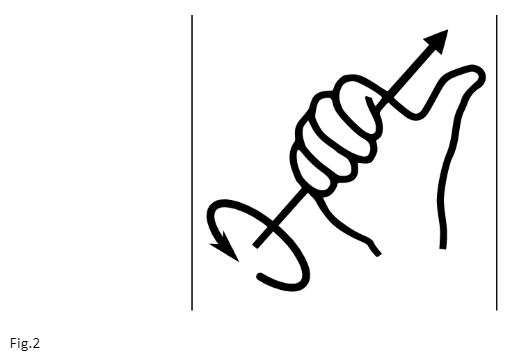A motor’s rated output power is constant, although speed and torque are inversely proportional. The available output torque reduces correspondingly as the output speed rises. The output speed reduces correspondingly as the output torque increases.
The rotating force of an electric motor is known as torque, whereas the rate at which the motor can revolve is known as speed.
To conduct useful mechanical work, you’ll need a lot of torque. The nature of the torque is determined by the type of load. It could be continuous and unaffected by speed, a function of speed, time invariant, or time variant.
Torque
Torque is a measurement of the force required to rotate an object around an axis. In linear kinematic, force causes an object to accelerate; in angular kinematic, torque causes an object to accelerate (angularly).
Torque is intuitively understood by everyone who has ever opened a door. When opening a door, the person pushes on the side of the door that is furthest from the hinges. It takes a lot more force to push on the side close to the hinge.

There are two types of torque: static and dynamic.
The term “static torque” refers to a torque that does not create an angular acceleration. If the door does not rotate on its hinges despite the force applied, someone pushing on it applies a static torque to it.
A dynamic torque is carried by the drive shaft of a racing car accelerating from the start line because it must produce an angular acceleration of the wheels provided that the car is accelerating along the course.
The vocabulary used to describe torque can be a bit perplexing. Engineers frequently use the terms moment and moment of force interchangeably. In a racing car, the radius at which the force acts is known as the moment arm rise shaft.
How is torque calculated
The magnitude of torque vector T for a torque produced by a given forceF is
T=F∙rsin(θ)
The length of the moment arm is r, and the angle between the force vector and the moment arm is . The force is at right angles (90°)to the moment Arm in the case of the door depicted in Figure 1, therefore the sine term is 1 and the cosine term is 0
T=F∙r∙
The right hand grip rule is used to determine the direction of the torque vector. The torque vector points in the direction of the thumb when a hand is curled around the axis of rotation with the fingers pointing in the force direction, as shown in Figure 2.

Speed
The distance travelled per unit of time is known as speed. It is the rate at which an object moves. The magnitude of the velocity vector is represented by the scalar quantity speed. It has no sense of direction. A higher speed indicates that an object is travelling at a faster rate. It is travelling at a slower pace when it has a lesser speed. It has zero speed if it isn’t moving at all.
The formula is the most frequent approach of calculating the constant velocity of an item travelling in a straight line:
r=d/t
Where
r is the rate, or speed (sometimes donate as v ,for velocity)
d is the distance moved
t is the time it takes to complete the movement
Unit of speed
ms is the SI unit for speed (meters per second). The most popular units of speed in regular use are kilometres per hour and miles per hour. A common speed at sea is knots (or nautical miles per hour).
Torque and speed formula
Since we know that
Force=Torque/Radius
Hence,
Power=(Force×Linear Distance)/Time
And
Power=((Torque/Radius)×Radius×Angular Velocity×Time)/Time
And,
Power= Torque×Angular Velocity
Hence,
Torque=Power/ Angular Velocity
or
T=P/ω
Where,
P is the power (work done per unit time)
T is the torque (rotational ability of a body)
ω is the angular velocity (rate of change of angular displacement)
Torque Speed curve
The relationship between speed and torque varies significantly between different motor types and manufacturers. This is due in part to the mechanical design of the motors in question, but other factors such as material selection and manufacturing tolerances may also play a role.
Conclusion
Although speed and torque are inversely proportional, a motor’s rated output power remains constant. As the output speed increases, the available output torque decreases. As the output torque increases, the output speed decreases accordingly.
The force required to rotate an object around an axis is measured as torque. Force causes an item to accelerate in linear kinematics; torque causes an object to accelerate in rotational kinematics.
Speed is defined as the distance traveled per unit of time. It’s the speed at which anything moves. The scalar quantity speed represents the magnitude of the velocity vector. It doesn’t know where it’s going. An object travelling at a quicker rate is said to have a higher speed. When it has a lower speed, it travels at a slower rate. If it isn’t moving at all, it has 0 Speed.
 Profile
Profile Settings
Settings Refer your friends
Refer your friends Sign out
Sign out






